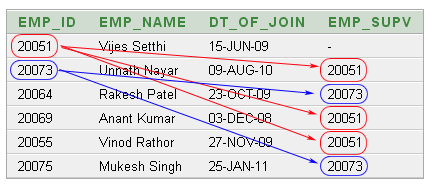ORDER BY Several Columns Example. The following SQL statement selects all customers from the Customers table, sorted by the Country and the CustomerName column. APPLIES TO: SQL Server Azure SQL Database Azure SQL Data Warehouse Parallel Data Warehouse Sorts data returned by a query in SQL Server.
Gdy wybieramy jakieś dane z tabeli ważna sprawą jest sposób prezentacji danych. Wszystkie wydobyte za pomocą języka zapytań SQL możemy posortować w dowolny sposób. Język SQL jest językiem deklaratywnym.
Decyzję o sposobie przechowywania i pobrania danych pozostawia się systemowi zarządzania bazą danych (DBMS). The ordering of the selected data can be done by one or more columns in a table. W praktyce znacznie uprasza nam to kod SQL.

Załóżmy, że chcemy pokazać zamówienia, wraz z ich detalami oraz informacją o wartości pozycji w ramach danego zamówienia jako sumy narastającej. We can use the keyword DESC to sort the data in descending order and the keyword ASC to sort in ascending order. Some databases sort the query in an ascending order by default. Make sure whatever column you are using to sort that. We will use the employees table in the sample database for the demonstration.
To sort the records in descending order , use the DESC keyword. It can also be used in an INSERT statement or a CREATE VIEW statement. When you use the SELECT statement to query data from a table, the order of rows in the result set is not guaranteed. It means that SQL Server can return a result set with an unspecified order of rows. Explanation In the example below we are selecting the LoginID column from the HumanResources.
Employee table where the VacationHours column equals and we are ordering the data by the HireDate in ascending order which is implied. SQL Lesson 12: Order of execution of a Query Now that we have an idea of all the parts of a query, we can now talk about how they all fit together in the context of a complete query. Jak jednak przekazać dynamicznie informacje po której kolumnie chcemy sortować wykonując dane zapytanie.
Tutaj pojawia się słowo kluczowe CASE. Can you please help me in solving this problem. In Standard SQL only column correlation names are allowed in the OREDER BY clause because, in theory, the table correlation names are out of scope i. Of course, not all SQL implementations conform to Standards.
Il est possible de trier les données sur une ou plusieurs colonnes, par ordre ascendant ou descendant. When you query data from a table, PostgreSQL returns the rows in the order that they were inserted into the table. Here are some examples of how you can use them. GROUP BY clauses Sometimes, rather than retrieving individual records, you want to know something about a group of records.
Change Column Order in a Table. Oracle sorts query in ascending order by default. Group By clause is used for getting aggregate value (example: count of, sum of) in one or more columns with reference to a distinct column in a table.

Order By clause is used to sort the resulting rows in the order of specified column or colum. Sortować możemy malejąco (wartości od największej do najmniejszej, czyli wartości maleją) i rosnąco (wartości od najmniejszej do największej, czyli wartości rosną). Przy sortowaniu możemy korzystać z aliasów nadanych kolumnom. Sortowanie może odbywać się po większej ilości kolumn, wtedy. Recently a reader asked me how to sort an alpha numeric field in SQL in natural order.
It orders the result set by specified column list. Alphanumeric values are commonly found and don’t sort naturally using numeric methods. When used with character data type columns it sorts data in dictionary-order. Część czwarta A kursu języka SQL.
W poprzednich lekcjach nauczyliśmy się już tworzyć bazy i tabele, a także wstawiać do nich dane. You can see that SQL Server starts at the table Animal and AnimalHabitat tables, then goes to the Habitat table. If you look at our query above, we clearly list the tables in the order of Habitat, AnimalHabitat, then Animal.
Brak komentarzy:
Prześlij komentarz
Uwaga: tylko uczestnik tego bloga może przesyłać komentarze.